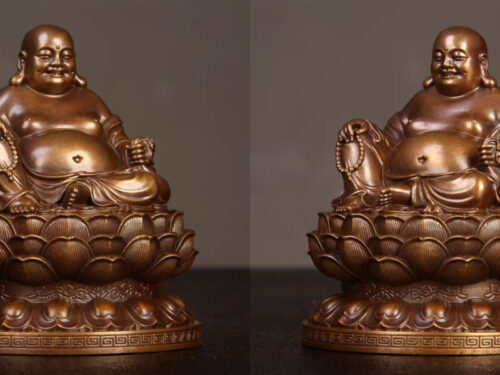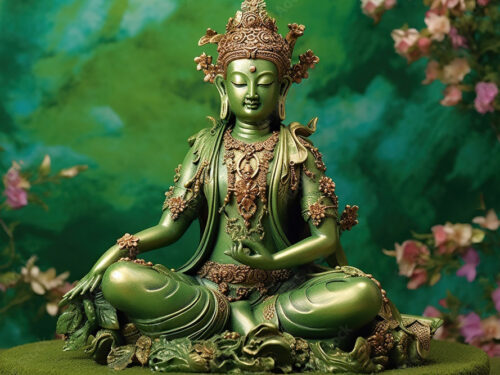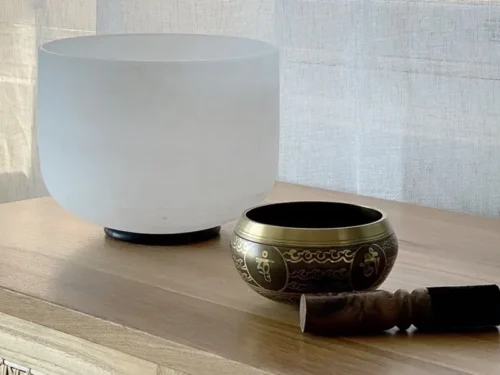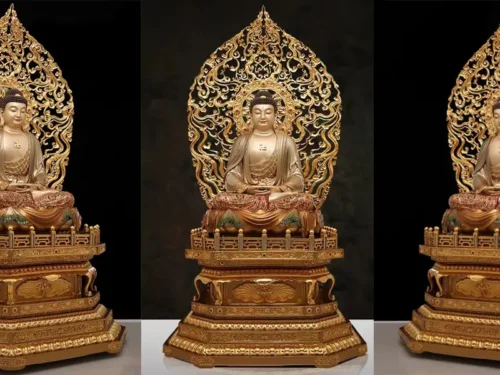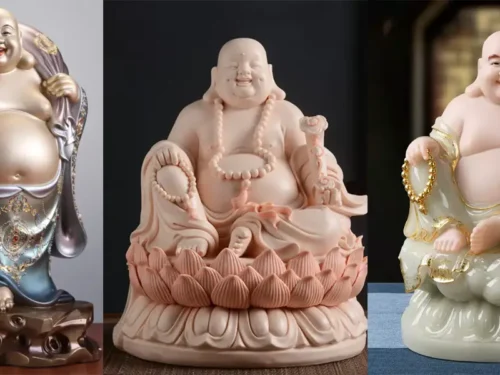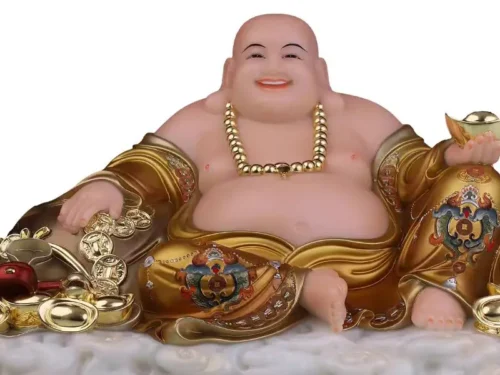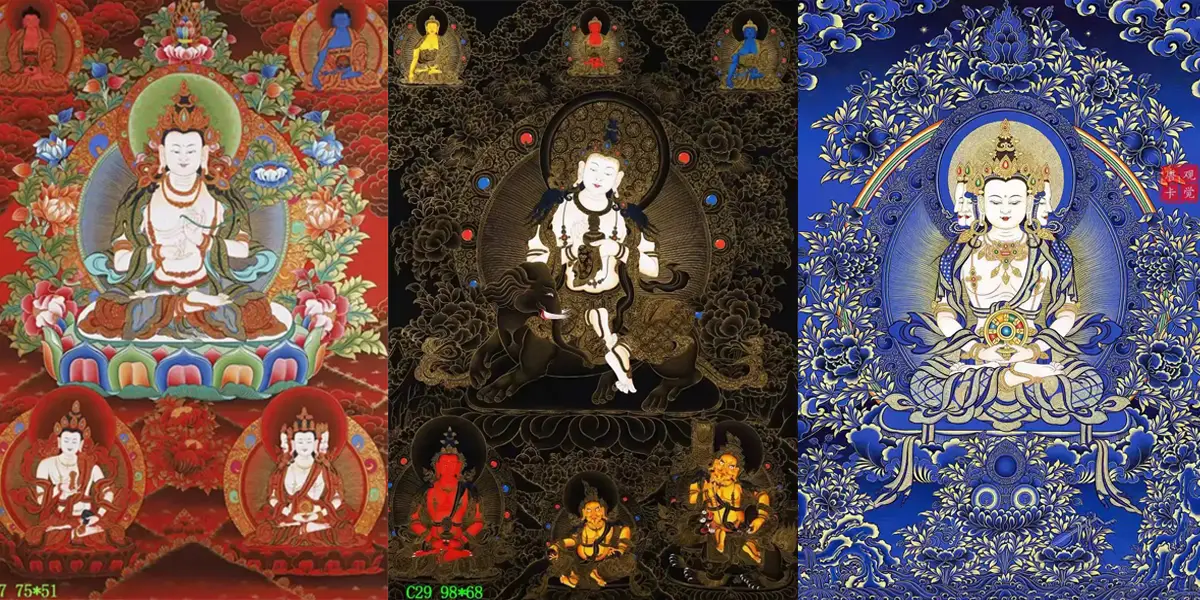
Table of contents

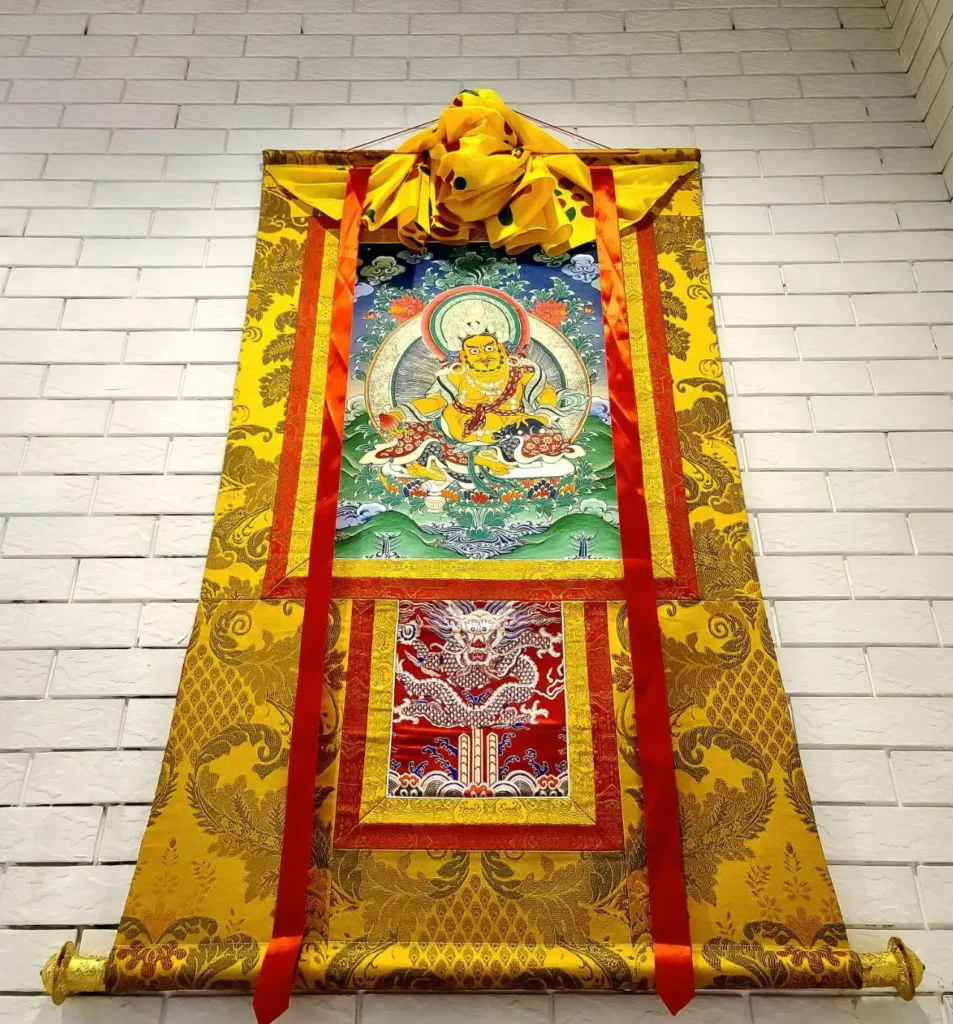
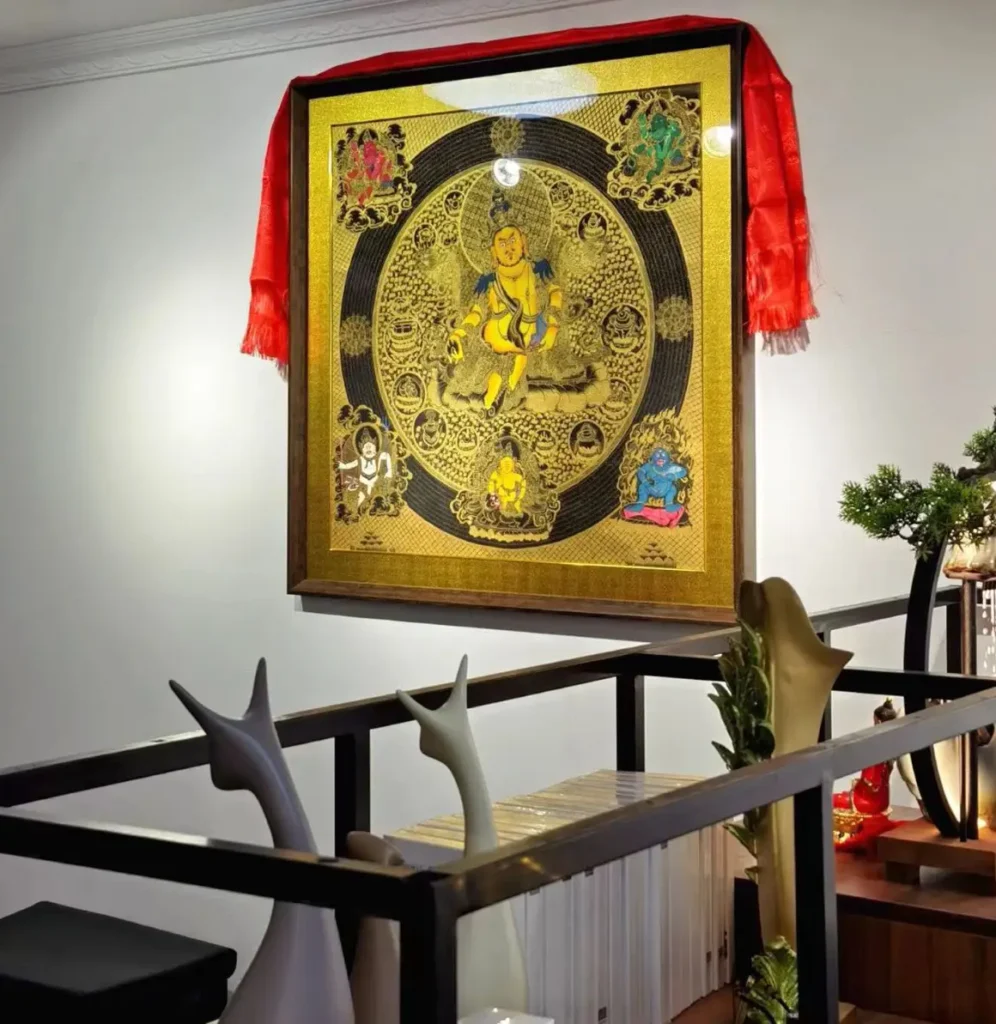
What is Thangka Art? Thang ga, also known as Tangga or Tangka, is a Tibetan transliteration of a religious scroll painting that is hung and worshipped after being framed with colored satin. Tangka is a unique form of painting art in Tibetan culture, covering various fields such as Tibetan history, politics, culture, and social life. Most of the surviving Tangka are works of Tibetan Buddhism and the local religion.
Tangka is a unique form of painting art in Tibetan culture. Having distinct ethnic characteristics, rich religious colors, and unique artistic styles, depicting the sacred world of Buddha with bright colors; Traditionally, pigments are made entirely of precious mineral gemstones such as gold, silver, pearls, agate, coral, turquoise, malachite, cinnabar, and plants such as saffron, rhubarb, and indigo to symbolize their sanctity. These natural ingredients ensure that the painted thangka has a bright and dazzling color, even after hundreds of years, it is still brightly colored. Therefore, it is hailed as a treasure of Chinese ethnic painting art, known as the “encyclopedia” of the Tibetan people, and is also a precious intangible cultural heritage in Chinese folk art.
The drawing of traditional thangkas requires strict requirements and extremely complex procedures, which must be carried out according to the rituals in the scriptures and the requirements of the master, including a complete set of process procedures such as pre painting ceremony, canvas making, composition and drafting, coloring and dyeing, line drawing and shaping, laying gold and silver, opening eyes, sewing, mounting, and lighting. Making a thangka takes a long time, ranging from half a year to over ten years.
Origin and Historical Development
Tangka art can be traced back to the 7th century, when Buddhism was introduced into Tibet from India. Tibetan religious belief is deeply rooted in people’s hearts, and uses Thangka to convey the core concept of belief. At first, thangkas were mainly drawn by monks to explain Buddhism and convey teachings.
Through a long process of development, thangka gradually formed its own unique style, absorbing artistic elements from India, Nepal, Mongolia and other places. Tangka is not only a form of painting, but also a carrier of Tibetan Buddhist culture, witnessing the inheritance and development of Tibetan culture.
Themes in Thangka Art
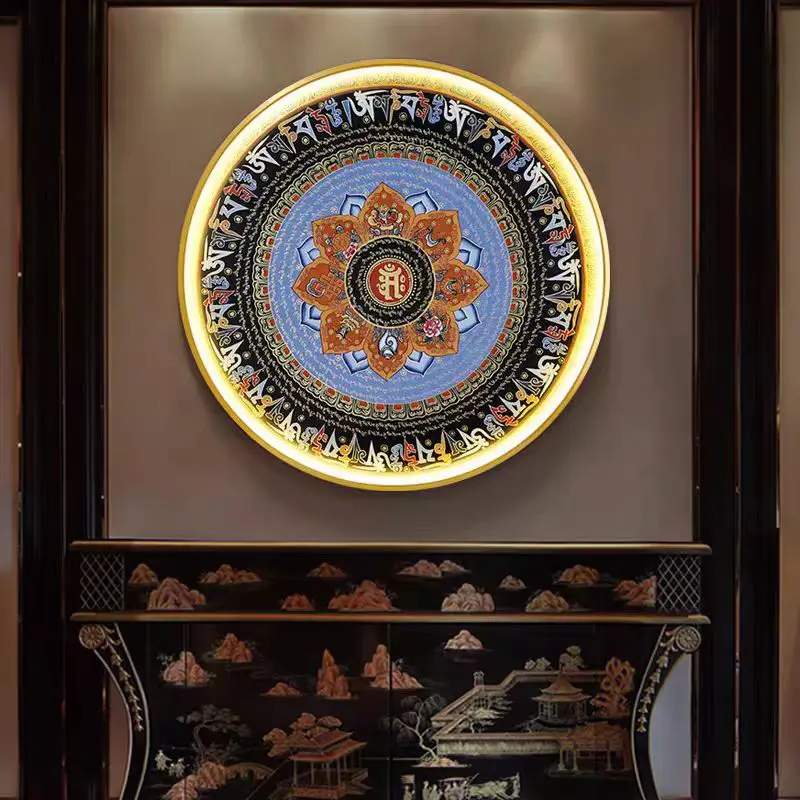
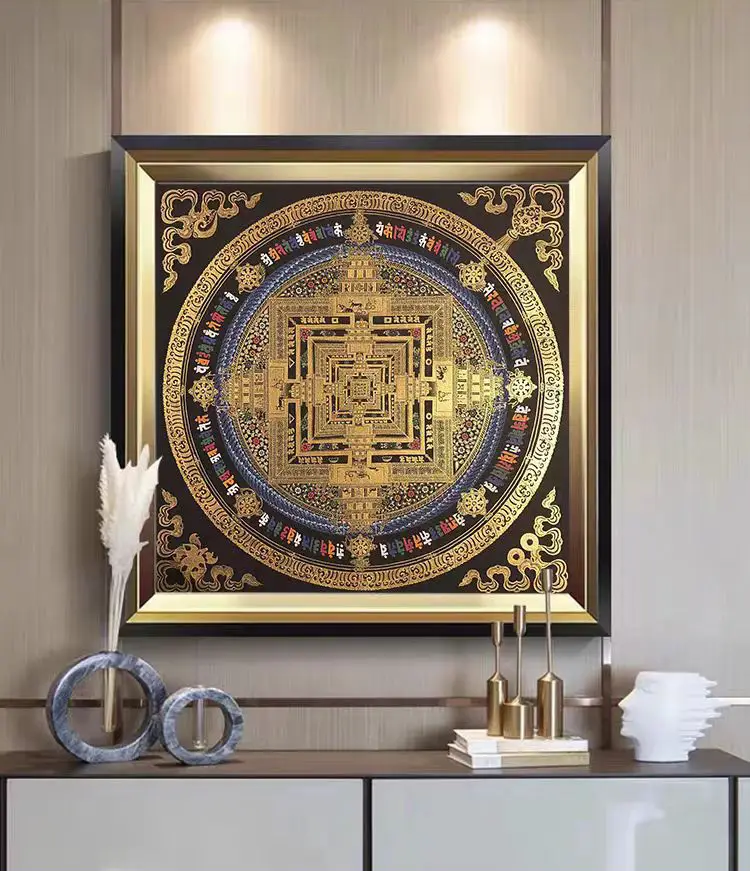
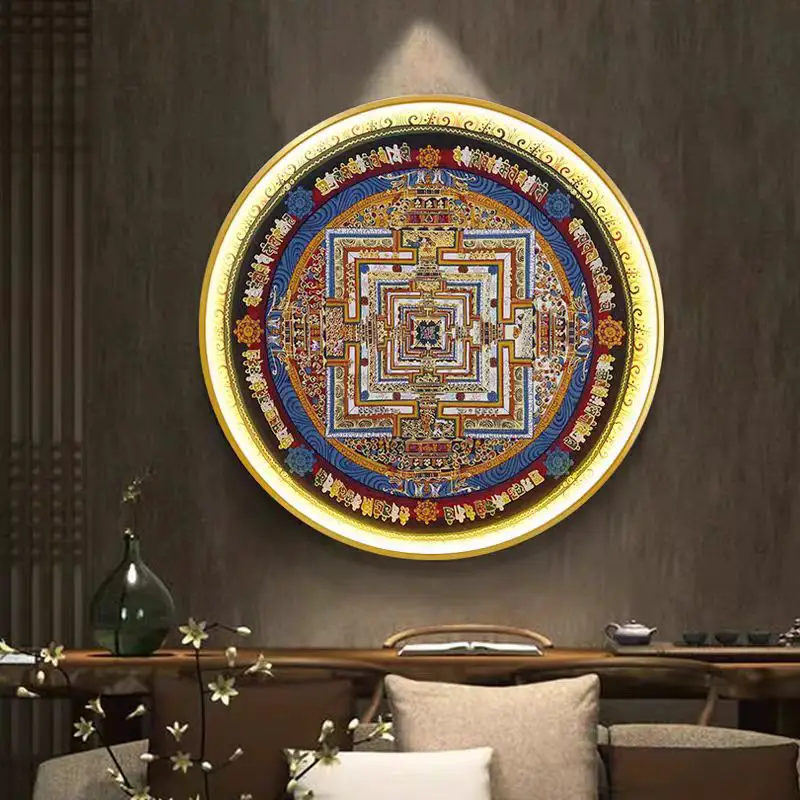
The painting themes of Tangka art are rich and diverse, mainly including Buddhist deities, traditional myths, historical legends, and life scenes. Among them, Buddhist deities are just one of the most common and important themes, such as Shakyamuni Buddha, Guanyin Bodhisattva, Manjushri Bodhisattva, and so on. Tangka expresses Buddhist teachings through rich images and symbols, allowing viewers to gain a deeper understanding of the wisdom and compassion of Buddhism.
In addition, thangka also depicts some famous Buddhist classic scenes, such as the Prajnaparamita Sutra and the Diamond Sutra. The drawing of these scenes aims to enable believers to better understand and comprehend the true essence of Buddhism by watching thangkas.
Major Categories of Thangka Art
- Categorize by content
1.1 Buddha statue thangka
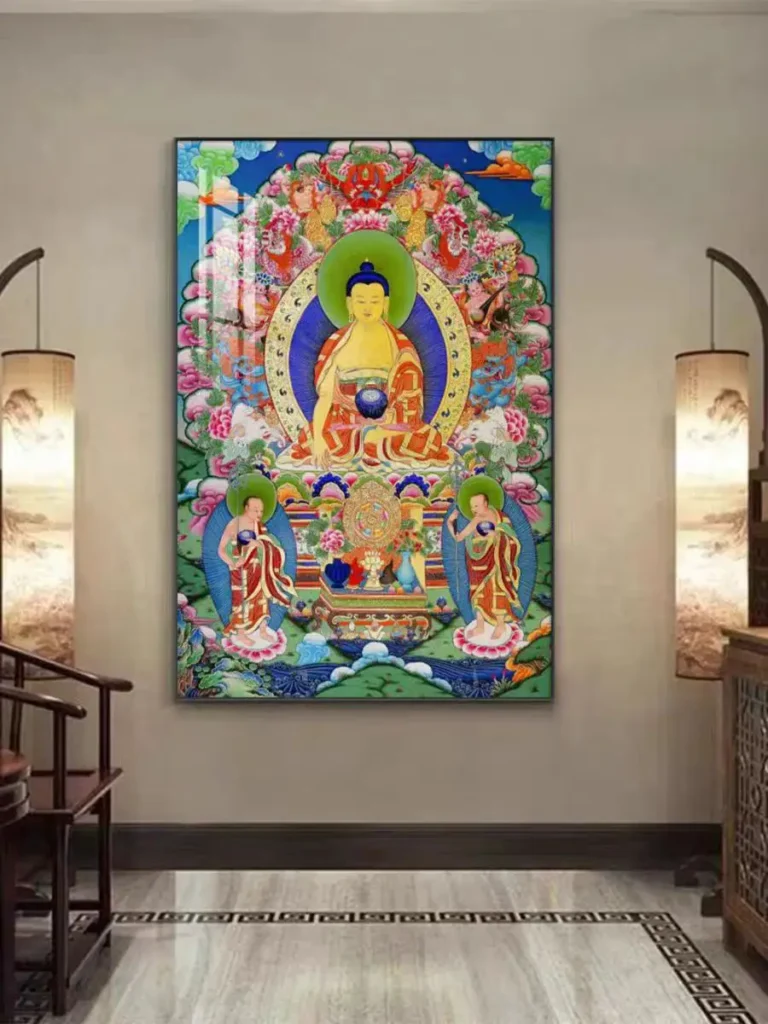
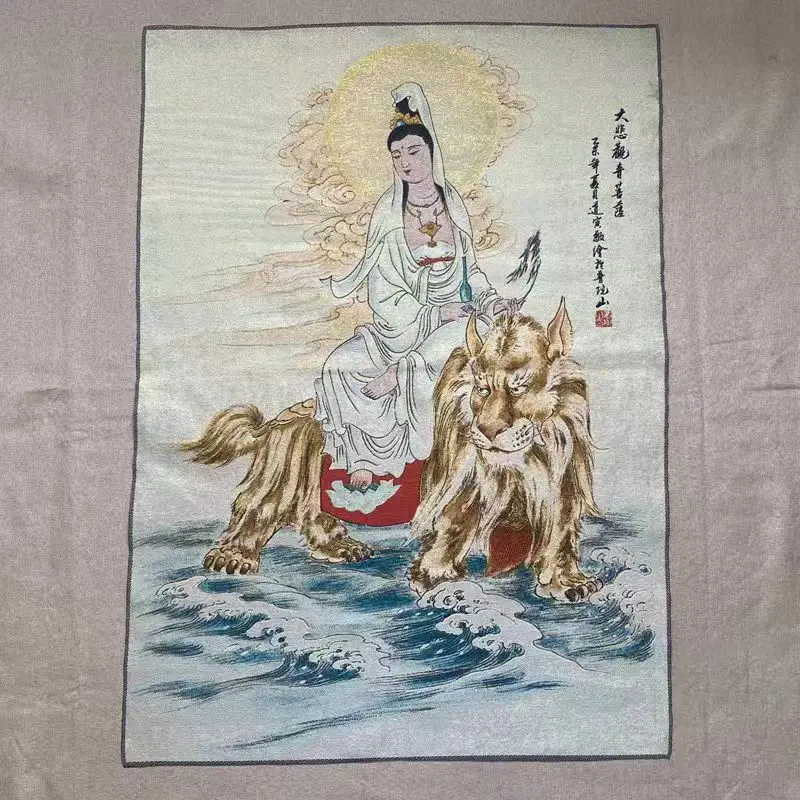
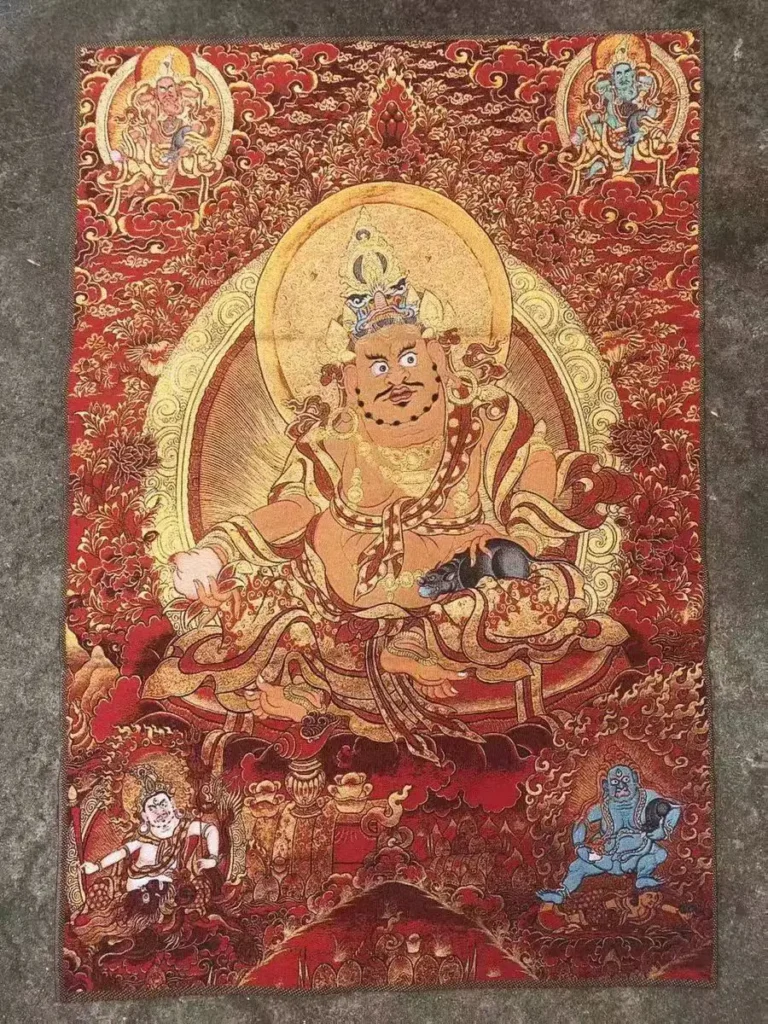
The Buddha statue thangka is the most common type, which conveys Buddhist teachings and guides believers to deeply understand and admire by delicately depicting the images of Buddha and Bodhisattva. Such as White Tara Thangka Painting.
1.2 Biographical Thangka
This type of thangka is based on the biographies of Buddhist ancestors and eminent monks, vividly showcasing their deeds and contributions to Buddhism. It is a visual record of Buddhist history.
1.3 Historical Tangka
The historical thangka depicts important events in Tibetan history, such as monarchy wars and national construction, and inherits historical and cultural heritage through artistic forms.
1.4 Mythical and Legendary Tangka
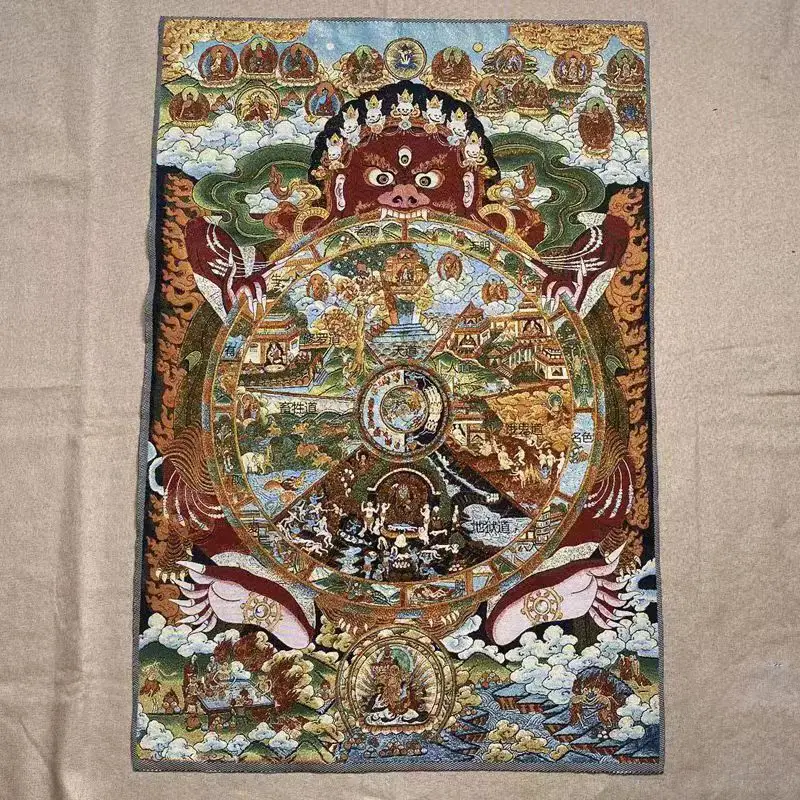
This type of thangka usually depicts Tibetan mythology and legends, including gods, demons, heroes, etc., presenting viewers with mysterious and creative images.
1.5 Teaching Tangka
Using Buddhist scriptures and doctrines as themes, conveying the wisdom and teachings of Buddhism through visual forms, helping believers better understand Buddhist ideas.
1.6 Astronomical Tangka
Astronomical thangka presents astronomical phenomena such as the structure and constellations of the universe through visualization, reflecting exploration of the universe and contemplation of its mysteries.
1.7 Calendar Tangka
This type of thangka mainly depicts the trajectory of celestial bodies such as the sun, moon, and stars, reflecting the Tibetan people’s understanding of time and seasons.
1.8 Tibetan Medicine Tangka
Using Tibetan medicine as the theme, it depicts the theories and treatment methods of traditional Tibetan medicine, conveying precious medical knowledge.
- Classification by size
2.1 Giant Thangka
Giant thangkas are often displayed in temples or palaces, with grand scale and exquisite visuals. They are usually used in solemn occasions, giving people a sense of solemnity and solemnity.
2.2 Regular Tangka

The ordinary thangka is the most common size and is suitable for hanging in temples, homes, or Buddhist temples for daily worship and worship.
2.3 Small Thangka
Small thangkas are usually delicate and suitable for carrying or as gifts, making them a convenient form for dissemination and sharing. Thangka Pendant is also a common type of small thangka.
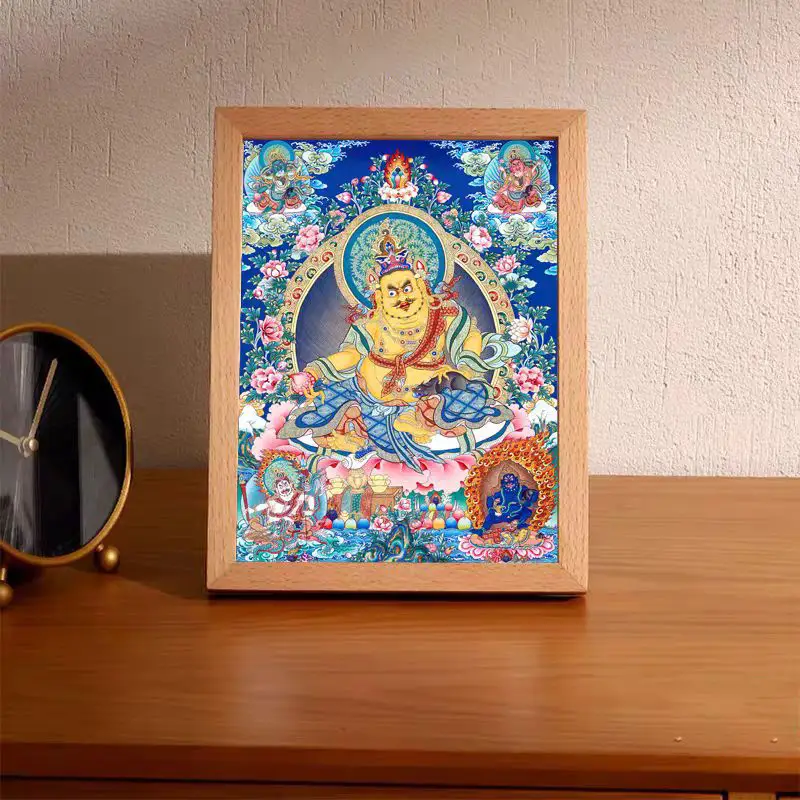
- Classification by material
3.1 Embroidered Tangka
Embroidered thangkas are finely embroidered with various colored silk threads, which are tough and durable, showcasing meticulous craftsmanship and artistic effects.
3.2 Kesi Tangka
Through the weaving method of “connecting warp and weft”, patterns are formed by interweaving weft lines, presenting a unique three-dimensional effect. Elements such as stone carving and wood carving further enrich artistic expression.
3.3 Brocade Tangka
Using satin as the main material, through jacquard weaving, the required patterns and scenery are formed, making the thangka more diverse and colorful.
3.4 Stacked Embroidery (Applique) Tangka
First, cut various colored satin into shapes, and then paste them onto the thangka base material to create a rich sense of hierarchy in the picture.
3.5 Painting Tangka
First, patterns are drawn on paper, cloth, leather, etc., and then made into thangkas. This form is similar to murals and presents a unique painting style.
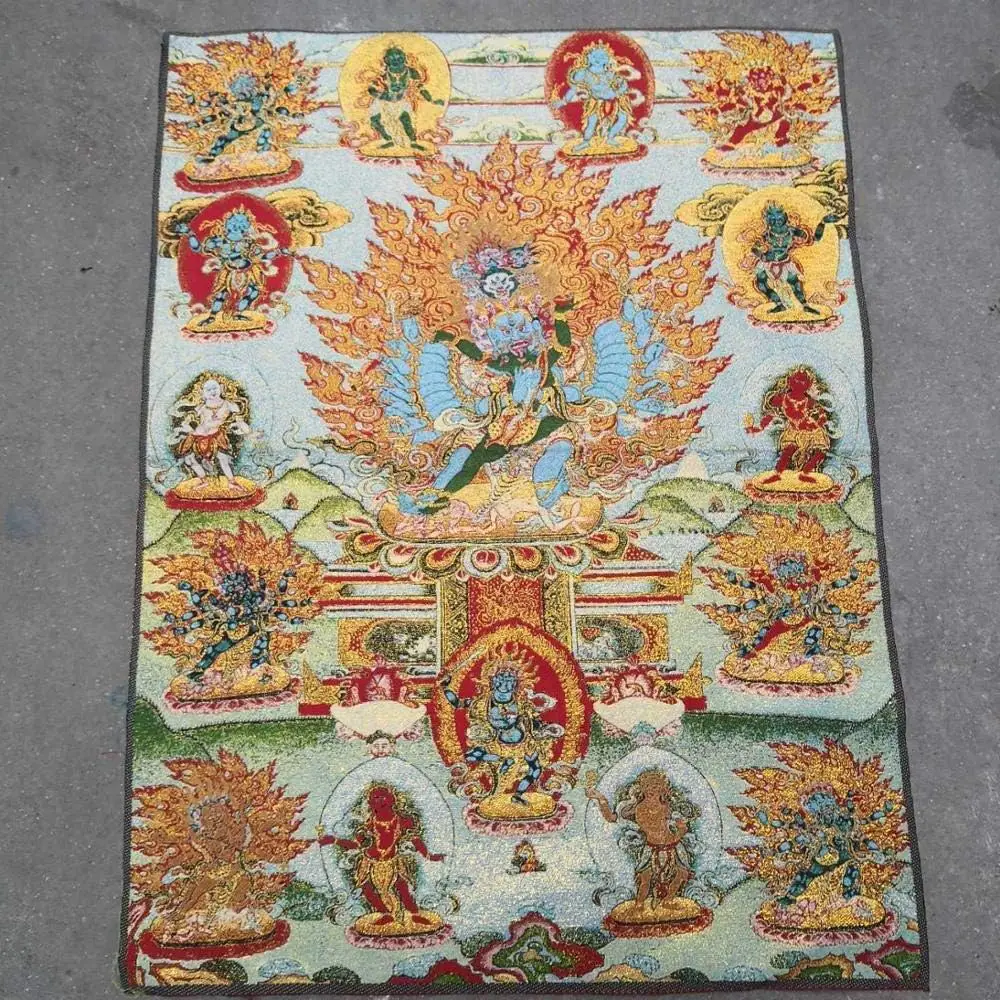
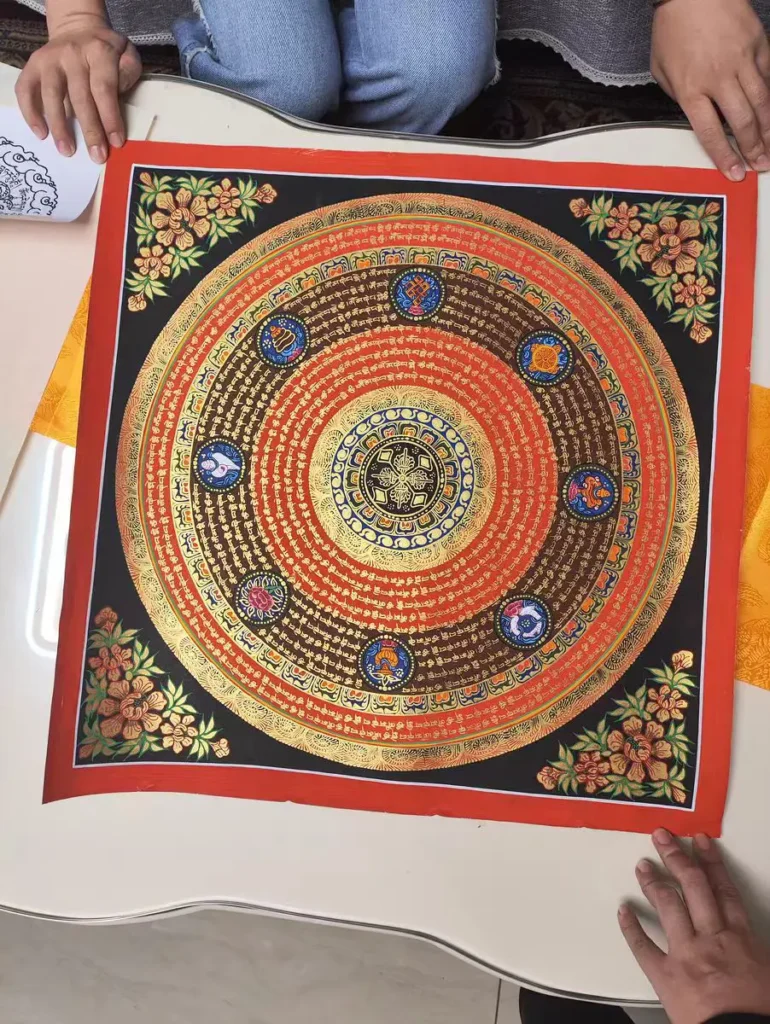
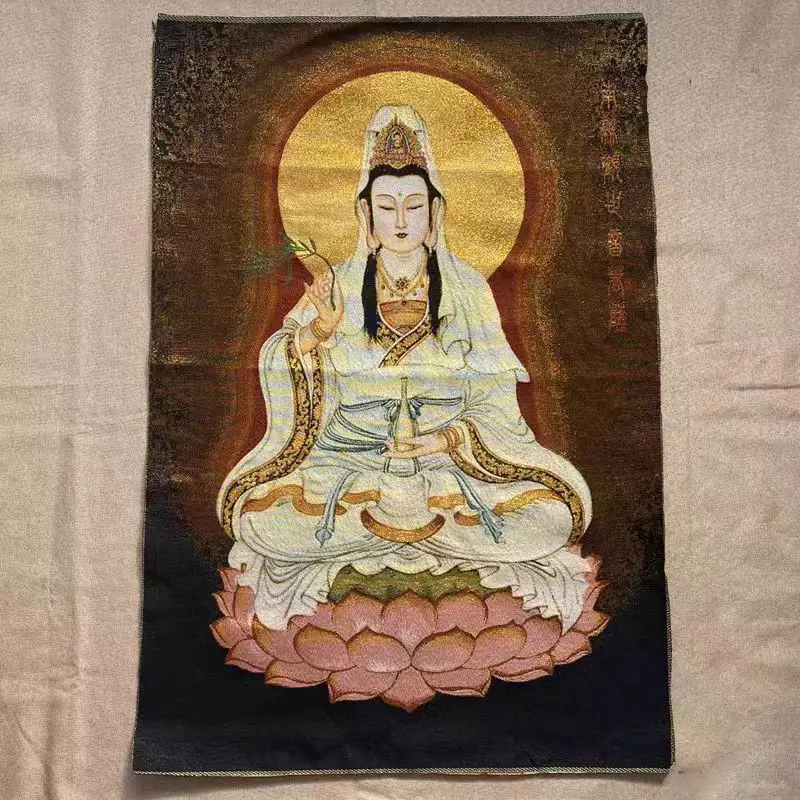
3.6 Pearl Tangka
Pearl thangka is a special type of thangka, made up of tens of thousands of pearls and gemstones strung together to create a graceful and elegant scene, rich in preciousness and uniqueness.
- Hand-painted Thangka
4.1 Colorful Tang
On a white background, various colors are used for drawing, showcasing the rich color expression of thangka.
4.2 Jintang
The Jin Tang Dynasty uses gold as the background, embellished with gold foil, to make the entire picture appear solemn and radiant.
4.3 Yintang
The Silver Tang Dynasty presents a fresh and elegant artistic effect with a silver background.
4.4 Red Tang
Red Tang, with red as its background, usually symbolizes auspiciousness and prosperity, giving people a warm and peaceful feeling.
4.5 Black Tang
Black Tang, with a black background, is often used to express solemn and profound themes, giving thangkas a sense of mystery.
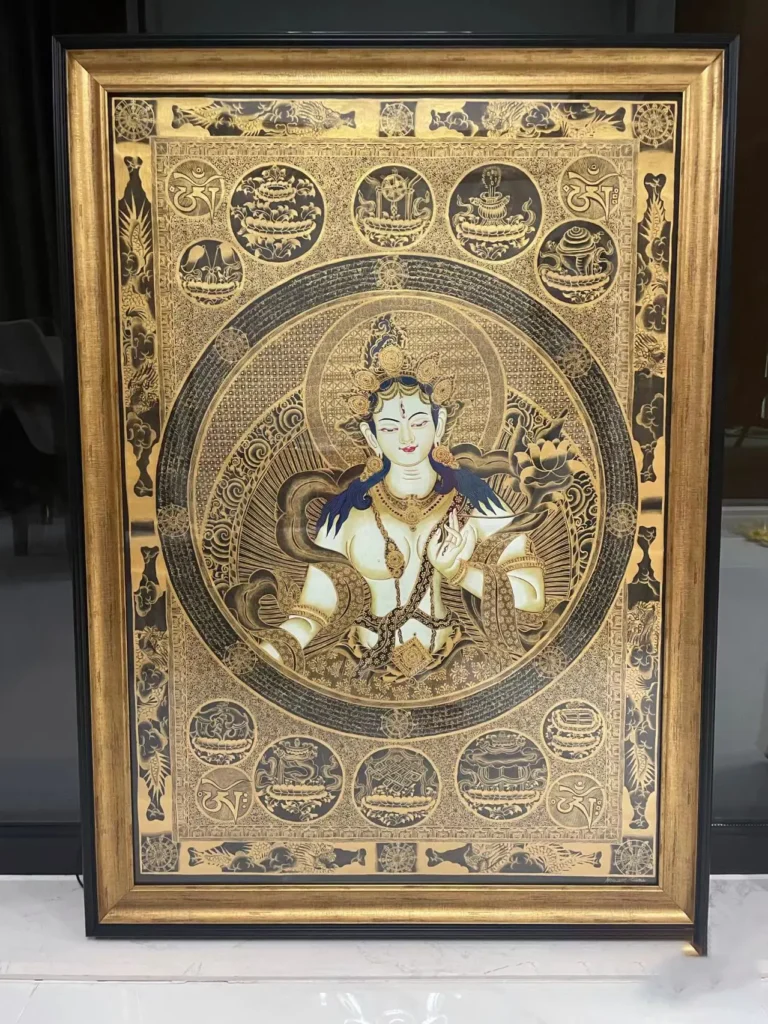

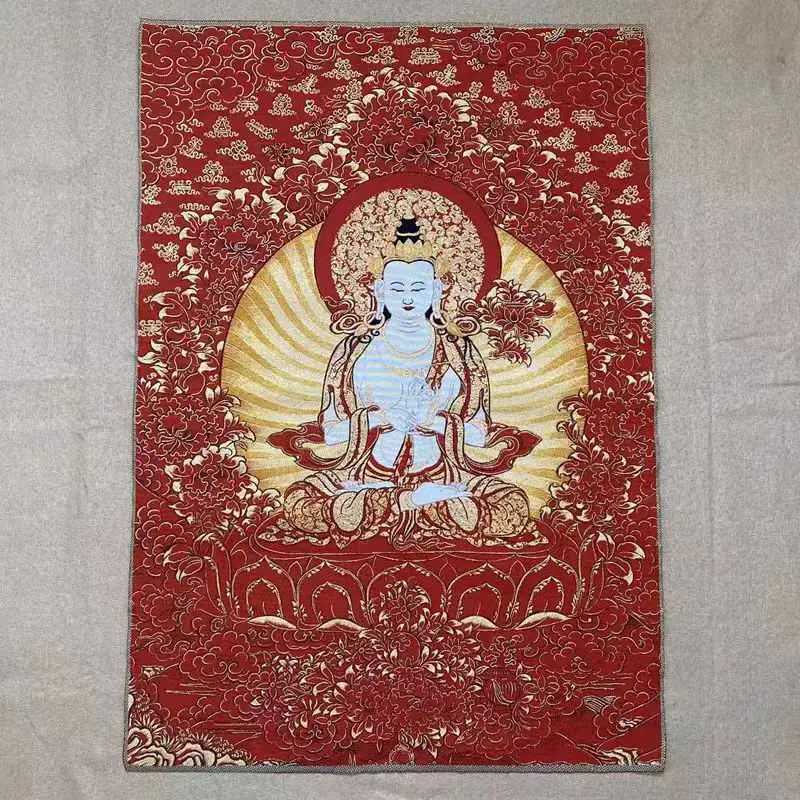
Process of Creation
The drawing of thangka is a complex and delicate craft, usually completed by experienced artists. The entire drawing process can be divided into several main steps:
Prepare Canvas: Tangka usually uses canvas or silk as the canvas, and artists will perform some basic treatments on the canvas to ensure that the paint can adhere and be preserved for a long time.
Drawing contours: The artist first outlines the main image on the canvas to ensure the accuracy of the overall structure and proportions.
Coloring: The artist uses natural mineral pigments such as cinnabar, bluestone, wool white, etc. to color the thangka. The selection and mixing of pigments require experience and skills to ensure full and layered colors.
Depicting details: After coloring, the artist will carefully depict details, including clothing, decorations, backgrounds, etc., to make the entire picture more vivid.
Mounted: After completing the painting, the thangka needs to be mounted. Usually, the canvas is wrapped in satin or velvet, with decorative borders to protect the artwork and enhance its visual effect.
Mounting and Framing
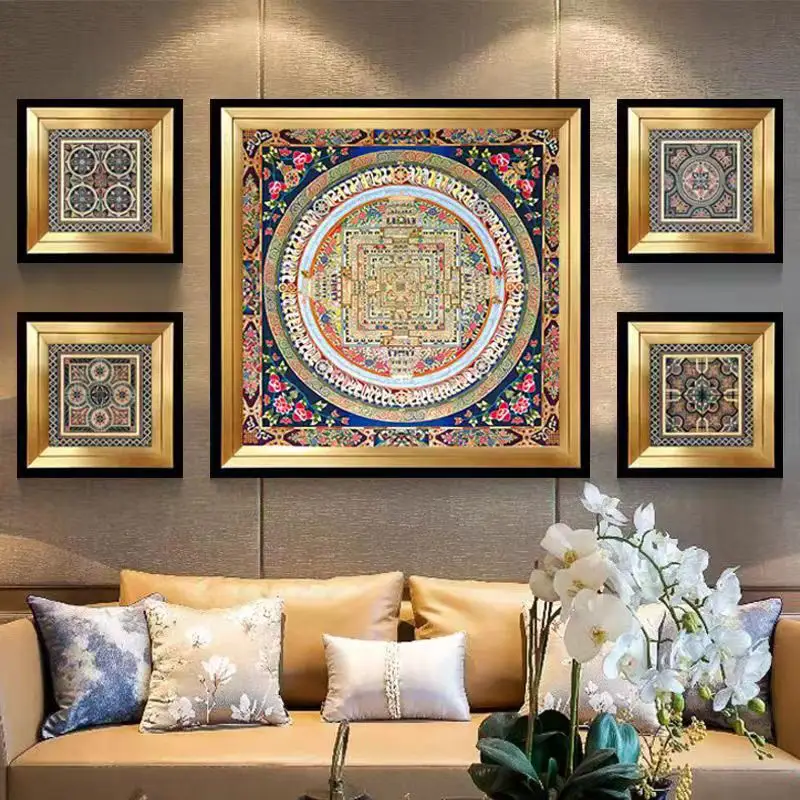
The mounting of thangkas is very important as it not only protects the artwork but also adds value to the artwork. The mounting of thangkas is usually divided into two parts:
Frame up: Frame up the canvas of thangka, usually using noble materials such as silk and velvet to enhance the overall viewing experience.
Border mounting: Adding exquisite borders around the artwork not only helps to protect the edges, but also adds a sense of solemnity and elegance to the thangka.
The mounting process of thangka requires experienced craftsmen to ensure the care and respect for the artwork.
Consecration and Worship
After the completion of thangka painting, it is usually necessary to perform a “lighting” ceremony, also known as “topping” or “blessing”. This is a religious ritual that endows thangka with sacred power through prayer and ritual, giving it a stronger religious significance. At this ceremony, thangkas are usually placed in shrines in temples or households for worshippers to worship.
Believers regularly worship thangkas in their daily lives, which is not only an expression of Buddhist faith but also a respect for art. The existence of thangka is not only a decoration, but also a spiritual sustenance, through which people can feel the compassion and wisdom of Buddhism.
Value and Significance
Thangka art has profound value and significance in the fields of culture, religion, and art.
Cultural inheritance: Tangka is an important component of Tibetan Buddhist culture, vividly showcasing Buddhist teachings and traditional culture through its visuals. It is a carrier that transmits religious beliefs, historical heritage, and living scenes to future generations.
Artistic expression: Tangka expresses the artist’s unique understanding of life, faith, and the universe through its unique painting style and rich colors. This kind of artistic expression is not only reflected in the religious field, but also has a profound impact on the entire art field.
Spiritual sustenance: For believers, thangka is not only a work of art, but also a spiritual sustenance. By appreciating and worshiping thangkas, people can gain inner peace and spiritual satisfaction.
Market value: With the increasing dissemination and recognition of thangka art, its value in the art market is gradually increasing. Some precious thangka works are considered collectibles with considerable investment potential.
In summary, thangka art, as a unique form of painting, not only occupies an important position in Tibetan culture, but also demonstrates its profound religious and artistic connotations worldwide. By understanding the origin, historical development, painting subject matter, classification, painting process, mounting situation, consecration, and value significance of Tangka, we can better appreciate and understand this precious artistic heritage that has been passed down for a thousand years.


